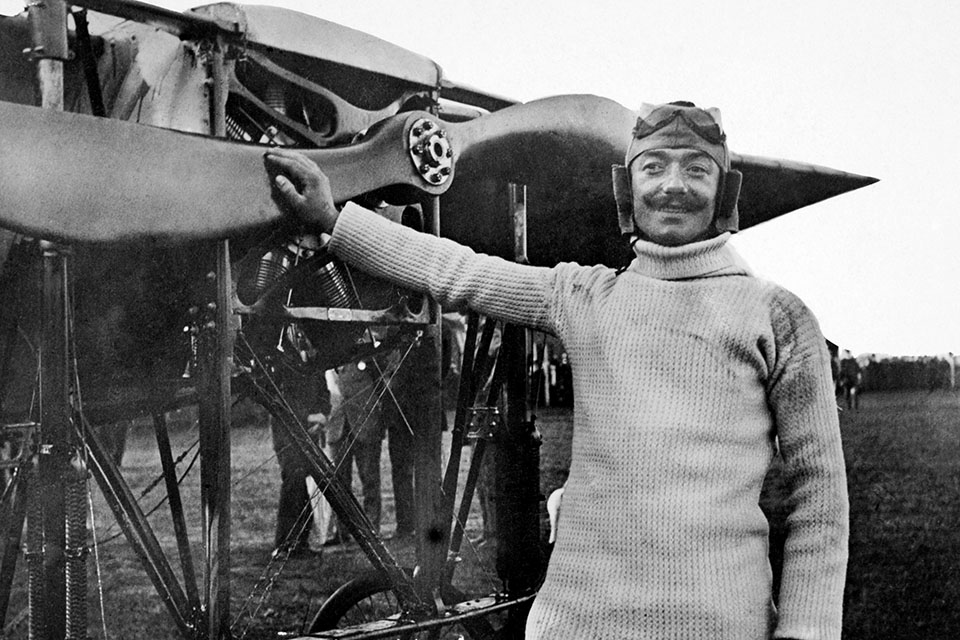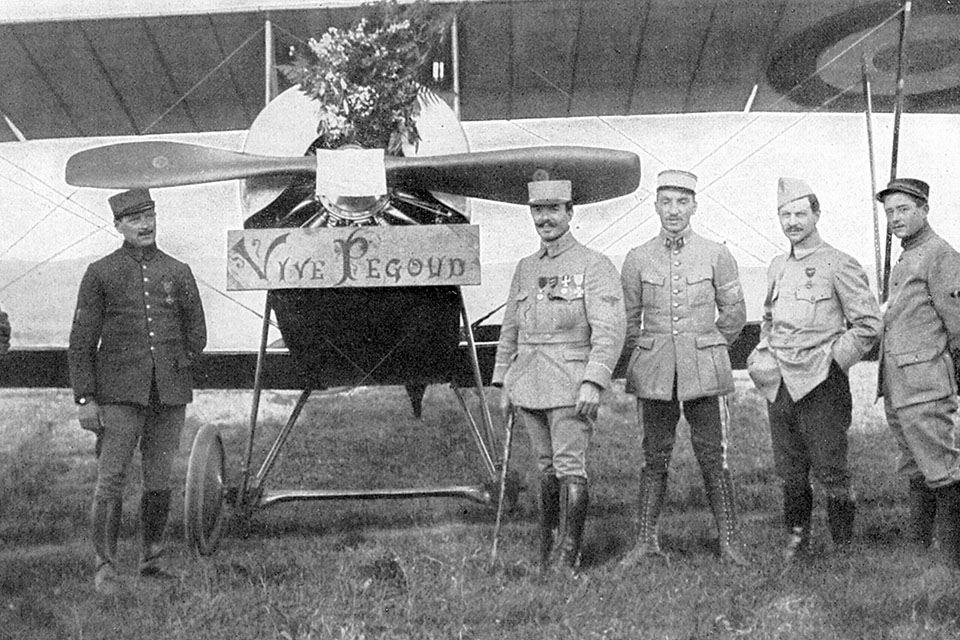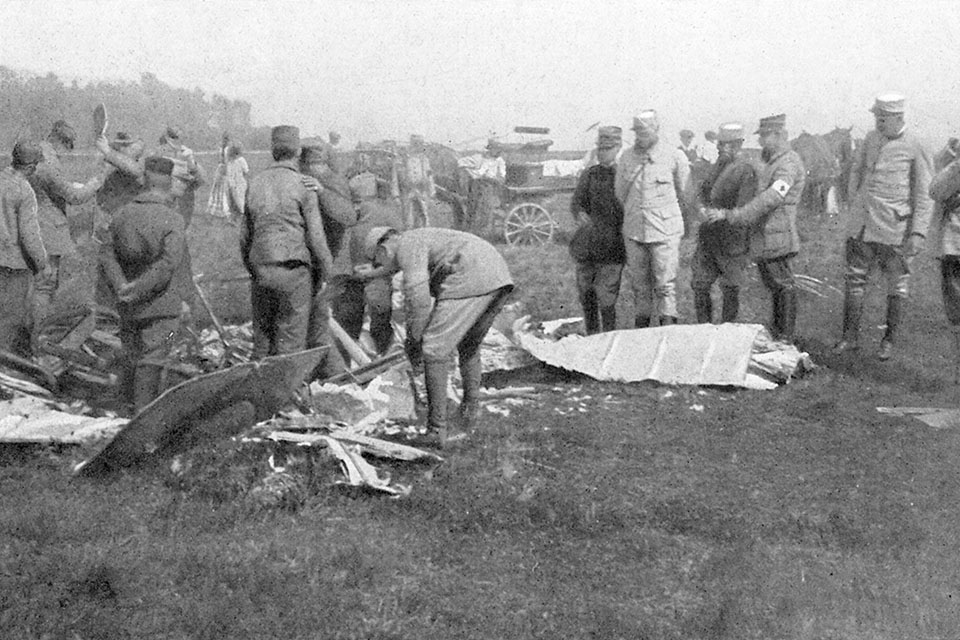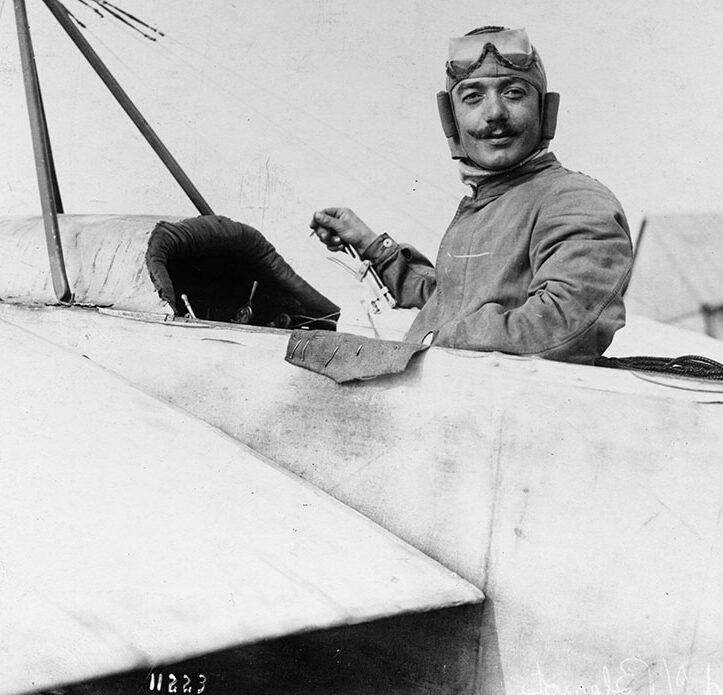The fighter ace—that dead-eyed hotshot who has downed five or more adversaries in aerial combat—is an iconic figure of the air age. The term derives from the French word as because the first man to earn the title was French. But Adolphe Pégoud, the original ace, had already acquired a title prior to that: le Roi du Ciel, or “King of the Sky.”
In 1907 Pégoud enlisted in the French army in North Africa, where he remained until the following year. Back in France he became an accomplished horseman, but an airplane ride in October 1911 set his sights on the exciting new field of aviation.

Pégoud worked as a mechanic until his release from military service on February 13, 1913, allowed him to focus on training for his own pilot’s license, which he obtained on March 1. He then began a series of experiments that included the first parachute jump from a plane in France, on August 19, and the first inverted flight on September 1. On September 21, Pégoud put his Blériot XI through a vertical loop. He was initially hailed as the first to perform that maneuver until word reached France that Russian army officer Piotr Nikolaevich Nesterov, had looped a Nieuport IV on September 9.
Pégoud was planning to tour the U.S. when World War I broke out on July 28, 1914. He and his mechanic, Léon Lerendu, joined the Camp Retranché de Paris (CRP), a unit formed to defend the French capital. They then transferred to Escadrille MF.25 and flew Henry Farman 11 pusher biplanes.
While he undertook numerous recon and bombing missions, Pégoud also began attacking German airplanes and balloons. On January 23, 1915, Pégoud and Private Lerendu were transferred to MS.37, a new squadron equipped with Morane-Saulnier L two-seat parasol monoplanes. On February 5, Pégoud attacked a German Taube monoplane and Lerendu’s machine gun fire forced it to crash-land. Pégoud then encountered two Aviatiks, one of which they sent diving away and the other forced to land. The two Frenchmen were credited with a triple victory, and Pégoud was awarded the Médaille Militaire.

On April 2 Pégoud attacked a pair of twoseaters and drove one down in French lines. On the 18th he transferred to MS.49 at Fontaines. Ten days later Pégoud attacked an Aviatik, and although Lerendu’s gun jammed after only one shot, it proved enough to force the enemy plane down, for Lerendu’s fourth and Pégoud’s fifth victory.
Up to that point Pégoud had achieved his successes in two-seaters, but in July he got a Nieuport 10 sesquiplane. Soon pilots, including Pégoud, mounted a Lewis machine gun above the Nieuport 10’s upper wing and faired over the observer’s cockpit to turn it into a single-seat fighter. Flying his modified Nieuport on July 11, 1915, Pégoud dived on an Aviatik of Feldflieger Abteilung 48, and fired a long burst that sent it crashing in flames near Altkirch. Three days later, Pégoud was commissioned a sub-lieutenant.
As Pégoud closed on new prey over Mulhausen on August 28, an alert German observer scored a lucky hit on his engine. Even so, Pégoud’s conduct earned him a citation making him a Chevalier de la Légion d’Honneur. It pointed out that “Accumulating daily the traits of courage and audacity, he has attacked heavily armed planes alone countless times. On 28 August 1915…his plane was riddled by bullets, and he was forced to land and immediately took every means available to save his plane in spite of intense German fire.”

Pégoud’s luck finally ran out on August 31. As he was making his second pass at another two-seater of Feldflieger Abteilung 48 over Montreux, a bullet from the observer, 2nd Lt. Julius Bielitz, struck him in the heart. Ironically the enemy pilot, Sergeant Walter Kandulski, had been a student of Pégoud’s before the war. Two hours later the German crew flew over the lines to drop a wreath inscribed: “His adversaries honor the flier Pégoud, fallen in combat for his country.”
Pégoud was buried at Brosse-de-Belfort, but his body was later moved to the Mont-parnasse cemetery in Paris. A Blériot XI in his prewar markings is on display at the Musée de l’Air et l’Espace at Le Bourget.
Although he was neither the first to parachute from a plane nor the first to loop one, Pégoud posthumously achieved a unique distinction. His fifth aerial victory, scored on April 28, 1915, made him history’s first fighter ace. While the term as was actually coined for a later hero, Jean Navarre, it was retrospectively awarded to his qualified predecessors— starting with Adolph Pégoud.
Originally published in the January 2010 issue of Aviation History. To subscribe, click here.





